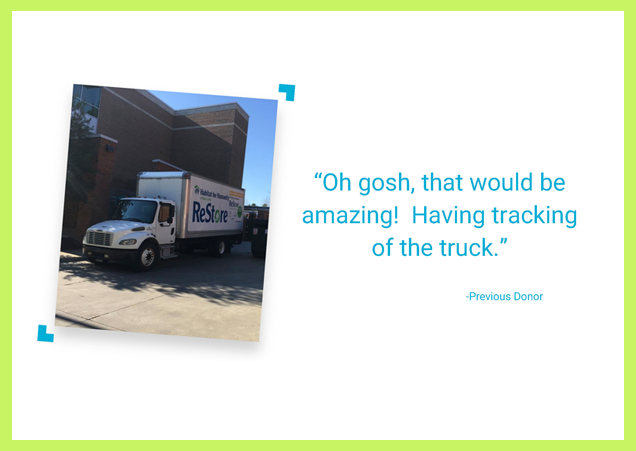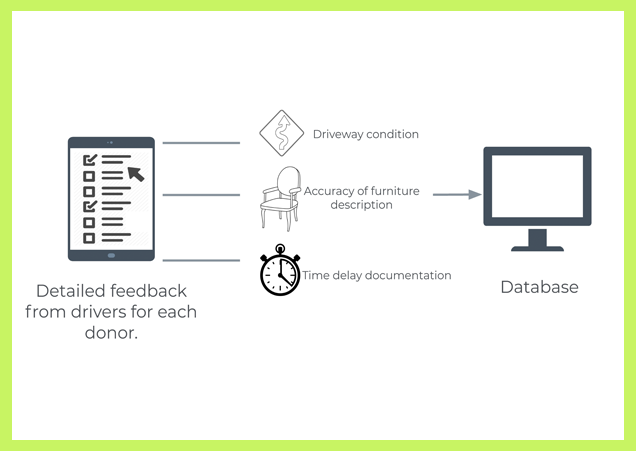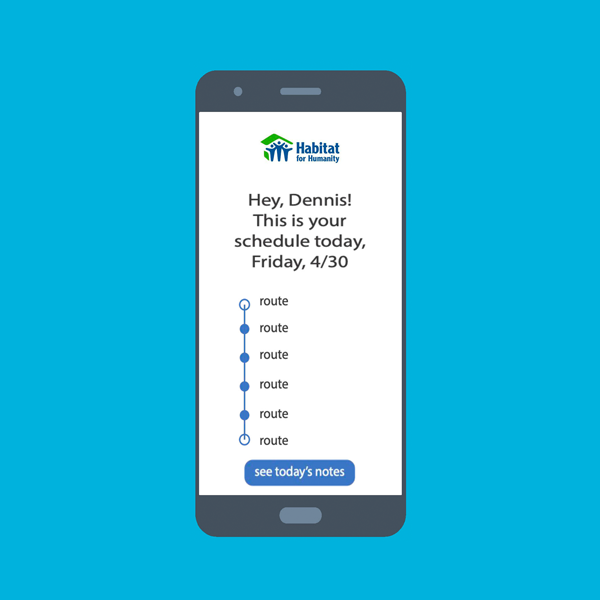
Habitat for Humanity
Redesign the donation experience for people who have household goods to donate, and the experience for drivers and dispatchers who pick up donations.
The people, mission and context
Habitat ReStores are independently owned reuse stores operated by local Habitat for Humanity organizations. ReStores accept donations and sell a constantly changing inventory of diverse, high-quality merchandise to the public at a fraction of the retail price, while diverting reusable household items and building materials from area landfills.
The problem
Habitat for Humanity of Wake County ReStore wanted to improve the way that their Procurement team worked with donors and each other to bring more high quality goods into the store. Their scheduling and mapping process was a tedious mix of separate systems that often led to miscommunication and sometimes resulted in missed donations.
The goal was to dramatically increase the number and quality of weekly donor pickups from their current average of 300 in order to drive revenue in support of the Habitat for Humanity mission.
For this challenge, the class was divided into two teams: one to focus on the donation experience (for people with household goods to donate), and the other to focus on the internal logistics experience (drivers, dispatchers)
The solution (Donations)
Team “D-8“ focused on designing an experience that helped guide a person making a donation through the end-to-end process, removing known frictions along the way. The major steps include assessing the condition of the item, arranging the pickup and giving the user feedback about the value of their donation.
The design integrated taking a photo of the donation into the mobile experience to encourage that step not be skipped. They also created a roadmap to show how Habitat for Humanity might use a quiz concept to gather more information about the item, and in the future a more sophisticated computer vision technology to assess the quality of the item.
You reminded me that we should be empathetic to the donor and looking at it from their perspective.
– Chrissy Sailstad, Director of ReStores
The solution (Logistics)
Team ”Routettes” focused on the experience of the driver and dispatcher – those responsible for orchestrating the internal logistics to ensure everything runs smoothly and efficently.
Their three-phase solution sought to deliver changes immediately with little effort – empowering drivers to make decisions where they are the experts and using online document sharing for centralized and instant updates.
The long term solution built on the systems and data from the earlier phases – a digital platform for ReStore and their donors to streamline and automate the donation, scheduling, and logisitics processes that made it easier for ReStore to manage and improved the experience of the donor.
“Cloud-based versus old school communications like texting will make a significant difference for us.”
– Emily George, Vice President of ReStores, Wake County





